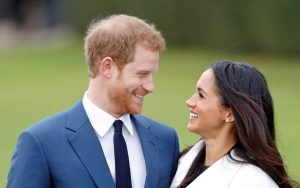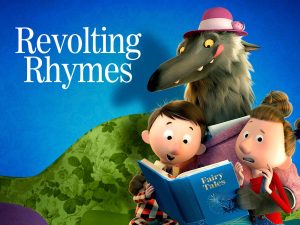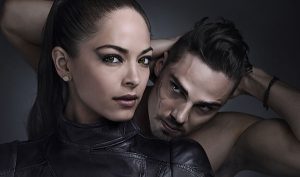Come join us for a run-through of our panel we are preparing to present at Western States Folklore Society conference in LA next month. We are so excited to present all of our hard work and would love feedback as we prepare to present at the conference. Our panel is titled Fantastic Realities of Fairy-Tale TV
B003 JFSB on April 6 from 3-5 pm
Check out our abstracts below to get excited for what we are presenting about!

The Princess and the Letter P: Fairy Tales and Edutainment in Preschool Television. Fairy tales have been used for teaching children for centuries. From oral and written literacy to moral lessons on honesty and sharing, fairy tales act as a vehicle for defining and creating the culture that uses them (Jack Zipes). Television uses fairy tales because they are powerful and well-known stories, but how are their didactic functions utilized? Preschool television is produced to be both entertainment and education, which separates it from most television. Preschool television teaches hard skills like counting and reading alongside the socialization in order to prepare children for school (Jeannette Steemers). What can we learn by studying the approach of shows like Sesame Street, Super Why!, Dora The Explorer, Sofia the First, and Mister Rogers’ Neighborhood to fairy tales? I propose that preschool television use the narrative power, familiarity, and visual nature of fairy tales to produce programs that effectively teach children in a variety of ways.
–Lauren Redding

Prince Harry to Marry Sleeping Beauty: Royal Weddings and the Televised Fairy Tale. Since the 1840 wedding of Queen Victoria, British royal weddings have functioned as media spectacles and royal publicity stunts. Real life royal weddings are referred to in the media as fairy-tale weddings. Styling these weddings as fairy- tale events reduces fairy tales to three stereotypical elements: romance, royalty, and the “happily ever after.” Televised fairy tale adaptations on shows like Once Upon A Time look to royal weddings, such as Grace Kelly’s, for inspiration. With Prince Harry engaged to marry Meghan Markle, an American actress who once portrayed Sleeping Beauty, fairy tale television and real-life royalty are more intrinsically entwined than ever. I will argue that maintaining their fairy-tale image is advantageous to the British royal family, who would otherwise struggle to maintain their relevance in a world that currently has more Disney princesses than countries in Europe that still have monarchies. — Erica Smith

Fairy Tale: A Dark Past and a Darker Future. In contrast to its bright animation and script full of rhyming couplets, 2016’s Revolting Rhymes (based on Roald Dahl’s poetry collection of the same name) could not be any further from traditional animated fairy tales. The violent and corrupt characters echo those found in dark, older versions of the tales, with which some viewers may be unfamiliar. While most adaptations focus on the catharsis of “happily ever after,” Rhymes is more lifelike—using the familiar genre of fairy tale to comment on issues of terror and modern anxieties. The show’s avoidance of the type of ending the viewer expects leaves a lingering sense of unease, evoking a connection to reality. Instead of wrapping up neatly in an epic showdown or a wedding (as fairy tales often do,) the show ends but never concludes, leaving the viewer to wait and wonder with Red Riding Hood: “will I ever feel safe again?” — Cortlynd Olsen

From Monster to Man: Animalistic Transformations of Male Protagonists in Fairy Tales on TV. Most fairy-tale protagonists on TV are female. Females star in most of the leading fairy-tale roles, from Once Upon a Time to Sofia the First. Snow White appears 294 times in our Fairy Tales on TV database, while Iron Henry/Frog King appears only nineteen times. However, except for Grimms’ Nick Burkhardt, men rarely appear on-screen as human protagonists: when men do appear, they are animalistic. This animalism usually serves to transform and develop the main character. Yet female transformation is minimal, as from a female worker to a female princess. Male transformation, on the other hand, is from monster to man. Does portraying males as talking animals make men less human? I propose that fairy-tale shows don’t necessarily need male tales to legitimize fairy tale studies; however, we must consider that domesticated and emasculated tales lend understanding to how we culturally value televised male protagonists. — Ariel Hubbard